Most people assume Taiwan speaks only Chinese, but here’s a surprising fact: you might hear four completely different languages just walking down a street in Taipei. This linguistic diversity isn’t just academic curiosity; understanding what language do they speak in Taiwan matters for anyone interested in East Asian culture, planning to visit, or doing business in this dynamic region.
Taiwan’s linguistic tapestry is rich and complex, with Mandarin Chinese as the official language, but also a significant presence of Taiwanese Hokkien, Hakka, and numerous indigenous languages, each telling a unique story of the island’s history and diverse population. These languages coexist in fascinating ways, from grandparents speaking Hokkien at home to teenagers switching between Mandarin and English.
Language diversity exists worldwide in unique forms. While Taiwan showcases multiple Chinese dialects and indigenous tongues, other communities have their own fascinating linguistic stories. For instance, the Amish community maintains their traditional Pennsylvania Dutch, and even fictional characters like the Minions have their own constructed language that entertains audiences globally.
In this blog by What Do They, you’ll learn about the primary languages spoken in Taiwan, including their historical origins, current usage, and cultural significance. We’ll explore how political changes shaped language use and what the future holds for Taiwan’s multilingual society. This blog will answer what tourists usually ask, i.e., “What Language do They Speak in Taiwan?”
The Official Language: Taiwanese Mandarin
After World War II ended in 1945, the Chinese Nationalist Party (KMT) took control of Taiwan and established Mandarin Chinese as the official language. This wasn’t Taiwan’s natural choice; rather, it was imposed by the new government, which had fled from mainland China. During martial law (1949-1987), authorities actually banned other local languages in schools and public spaces, forcing everyone to learn Mandarin.
Over decades, Taiwan developed its own version called “Taiwanese Mandarin” or Guoyu. While similar to mainland Chinese, it has unique characteristics. Taiwanese Mandarin uses traditional Chinese characters instead of simplified ones, and students learn the Bopomofo phonetic system rather than Pinyin. The pronunciation also differs slightly, for example, Taiwanese speakers might say “garbage” as “lèsè” while mainlanders say “lājī.”
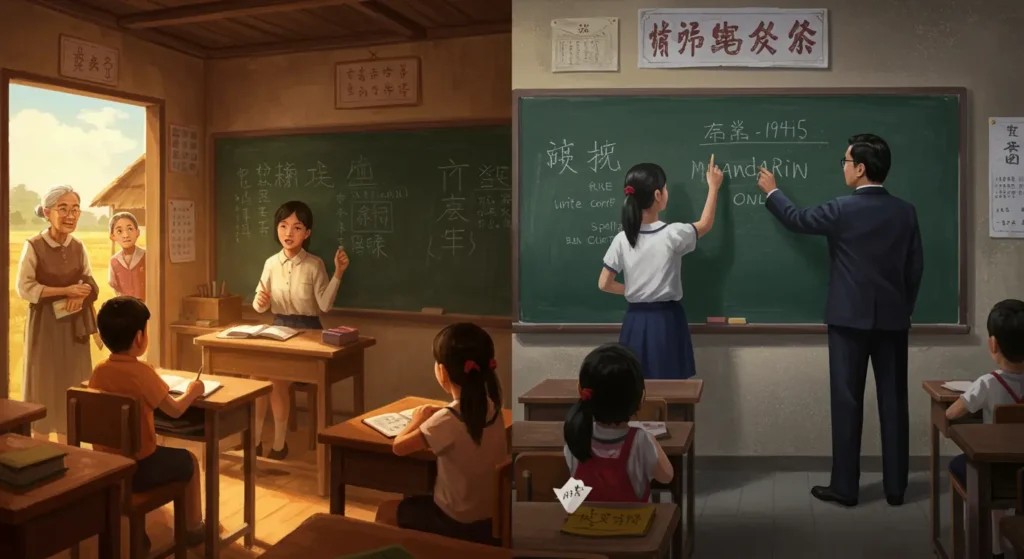
Today, Mandarin dominates Taiwan’s landscape. It’s the language of government, education, television, and business. About 83% of Taiwan’s population speaks Mandarin fluently, making it the primary way different ethnic groups communicate with each other. You’ll hear it everywhere from Taipei’s bustling night markets to rural government offices.
However, Mandarin’s role remains complex. While it unites Taiwan’s diverse population, many people remember it as a symbol of political control that nearly erased their native languages.
The Unofficial National Language: Taiwanese Hokkien (Min-nan)
Taiwanese Hokkien traces its roots to Fujian province in southeastern China. Starting in the 17th century, waves of Hokkien-speaking immigrants crossed the Taiwan Strait, bringing their language with them. Before Mandarin’s arrival, Hokkien was the dominant language among Taiwan’s Han Chinese majority for over 300 years.
Today, more than 70% of Taiwan’s population speaks Hokkien, making it the island’s second most common language. Unlike Mandarin’s formal domains, Hokkien thrives in daily conversations, family gatherings, traditional opera, and local TV shows. Many Taiwanese consider it their “mother tongue” and the most authentic representation of local culture.
Hokkien has eight tones compared to Mandarin’s four, creating a distinctly different sound. The language absorbed influences from its surroundings, Japanese words from the colonial period (1895-1945) and some indigenous terms. Writers use different romanization systems like Pe̍h-ōe-jī and Tâi-lô to represent the sounds, though most speakers learn it through hearing rather than reading.

Regional variations exist across Taiwan, with northern and southern dialects showing subtle differences. For many Taiwanese, speaking Hokkien represents cultural identity and connection to their ancestors. Recent years have seen growing efforts to preserve and promote the language through education and media.
The Hakka Language
The Hakka people have a unique migratory history within China, moving southward over centuries and developing their distinct culture and language. These “guest people” (the literal meaning of “Hakka”) began settling in Taiwan during the Qing Dynasty, establishing communities primarily in mountainous and hilly areas.
Like Hokkien, Hakka faced severe suppression during martial law when authorities prohibited its use in schools and public spaces. This policy nearly destroyed the language’s transmission to younger generations.
Today, approximately 6-7% of Taiwan’s population speaks Hakka, concentrated in specific regions like Miaoli, Hsinchu, and parts of Pingtung. However, usage is declining rapidly among youth, with many young Hakka people speaking only Mandarin or Hokkien.
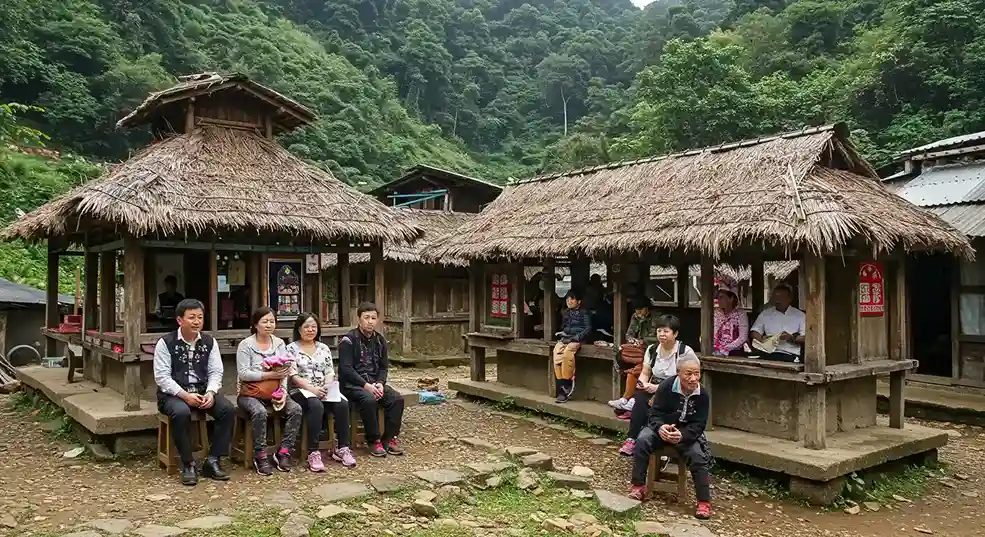
Hakka has its own tonal system completely different from both Mandarin and Hokkien. Taiwan’s Hakka speakers use five main dialects, with Sixian and Hailu being the most common. Each dialect has distinct pronunciation and vocabulary, making communication between different Hakka communities sometimes challenging.
Recognizing this cultural treasure’s endangered status, the Taiwan government now promotes Hakka through dedicated TV channels, schools, and cultural programs. The Hakka Affairs Council works actively to revitalize the language, viewing it as essential for preserving Taiwan’s multicultural identity and the rich heritage of Hakka communities.
The Indigenous (Formosan) Languages
Taiwan’s indigenous languages belong to the Austronesian language family, completely unrelated to Chinese languages. Remarkably, linguistic research suggests Taiwan served as the original homeland for all Austronesian languages, which later spread across the Pacific to places like the Philippines, Indonesia, and Polynesia.
The island hosts incredible linguistic diversity with over 20 recognized indigenous languages, each containing multiple dialects. The largest groups include Amis (eastern coast), Atayal (northern mountains), Bunun (central mountains), Paiwan (southern mountains), Tsou (central highlands), and Rukai (southern regions). Each language represents thousands of years of unique cultural development.
These languages face severe endangerment. Historical policies favoring Mandarin, combined with modernization pressures, have dramatically reduced speaker numbers. Many indigenous languages now have fewer than 1,000 speakers, with some having only elderly speakers remaining.
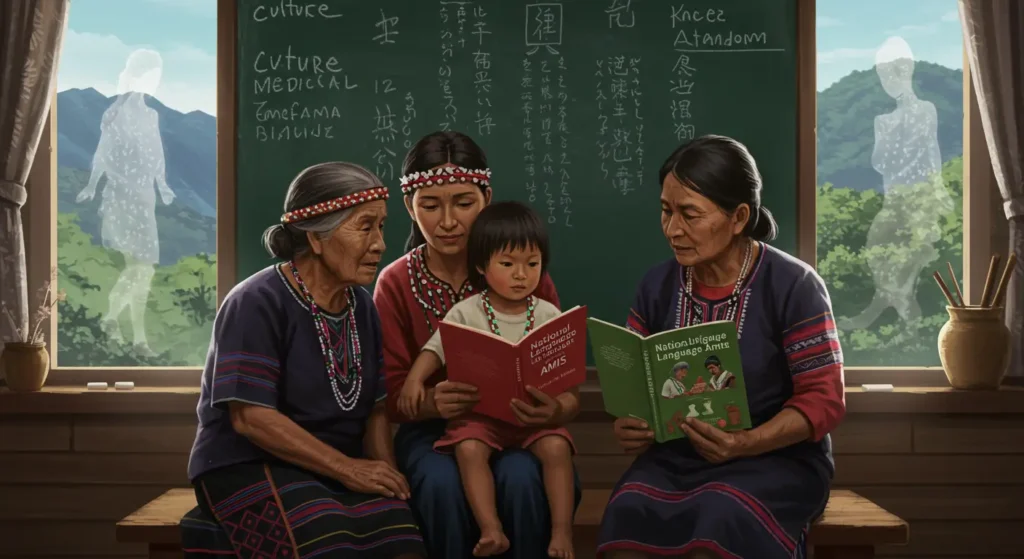
The government has launched urgent revitalization efforts including indigenous language classes in schools, cultural centers, and dedicated media programming. The Indigenous Languages Development Act of 2017 officially recognized these languages as “national languages” alongside Mandarin.
For Taiwan’s indigenous peoples, these languages carry irreplaceable cultural knowledge about traditional medicine, ecological wisdom, and spiritual practices. Their preservation isn’t just about communication, it’s about maintaining distinct identities that have existed on the island for thousands of years before any Chinese settlement.
Other Languages and Foreign Language Influence
Japanese:
Japanese colonial rule (1895-1945) left a lasting linguistic mark on Taiwan. Many elderly Taiwanese still speak Japanese fluently, having learned it during their school years. Even today, Japanese words appear in Taiwanese Hokkien, terms like “aisukurīmu” (ice cream) and “basu” (bus) remain common. Japanese influence extends beyond vocabulary to cultural expressions and mannerisms, particularly among older generations who experienced the colonial education system firsthand.
English:
English serves as Taiwan’s primary foreign language for international business, tourism, and education. Schools increasingly emphasize English learning, and the government launched a “Bilingual Nation” policy aiming to create an English-friendly environment by 2030. Young Taiwanese often mix English words into their Mandarin conversations, especially in urban areas. English proficiency is considered essential for career advancement and international competitiveness.
Southeast Asian Languages:
Growing immigration from Southeast Asia has introduced Vietnamese, Indonesian, Filipino, and Thai languages to Taiwan. These communities, including migrant workers and marriage immigrants, maintain their native languages while adapting to local life. You’ll find Southeast Asian shops, restaurants, and media serving these populations, particularly in industrial areas and major cities where these communities concentrate.
Other Chinese Dialects:
Beyond the main languages, Taiwan hosts small communities speaking other Chinese dialects like Cantonese, Shanghainese, and various regional varieties. These speakers typically arrived with different migration waves or through business connections. However, their numbers remain limited compared to Mandarin, Hokkien, and Hakka, and most speakers also use Taiwan’s dominant languages for daily communication.
The Dynamic Linguistic Landscape of Taiwan
Language Education System: Mandarin remains the primary medium of instruction across Taiwan’s education system, from elementary schools through universities. However, recent educational reforms now include local languages in the curriculum, students can choose to study Taiwanese Hokkien, Hakka, or indigenous languages as required subjects. English education has also intensified, with many schools introducing English classes from first grade and some implementing bilingual programs in various subjects.
Challenges and Future of Taiwan’s Languages
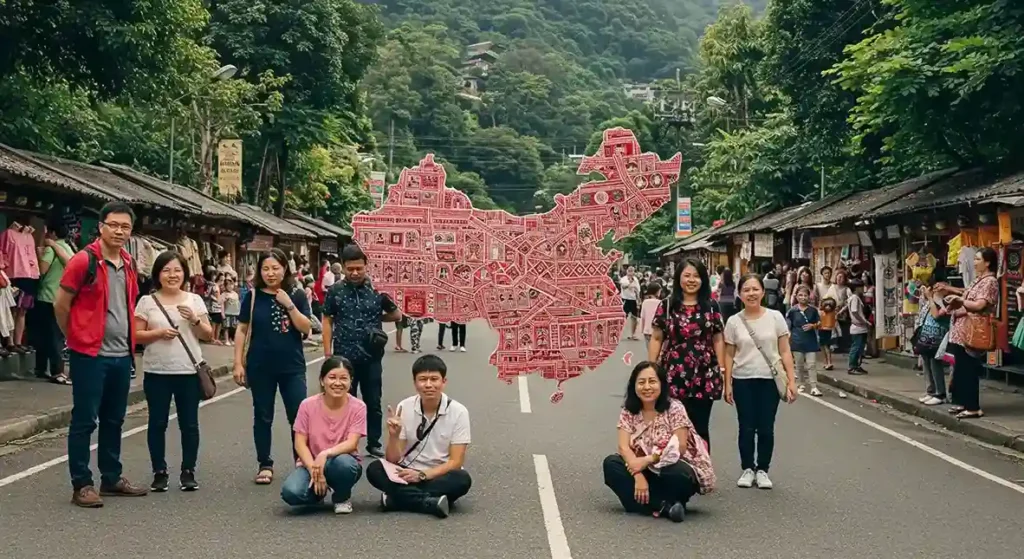
Challenges:
- Mandarin Dominance:
- Overwhelming presence in education, media, and professional settings
- Younger generations defaulting to Mandarin in daily conversations
- Economic advantages of Mandarin fluency over local languages
- Declining Intergenerational Transmission:
- Parents choosing Mandarin over native languages for children’s “success”
- Urbanization breaking traditional language communities
- Mixed marriages leading to Mandarin as household lingua franca
- Indigenous Language Endangerment:
- Some languages have fewer than 100 speakers
- Young indigenous people losing fluency
- Geographic dispersion weakening language communities
- Hokkien and Hakka Challenges:
- Reduced usage in urban areas
- Limited formal education opportunities
- Competition from Mandarin in professional contexts
Future Outlook:
- Continued government investment in language preservation programs
- Technology integration for language learning and documentation
- Community-driven cultural revival movements
- Balancing national unity with multicultural linguistic heritage
- Growing recognition of languages as cultural assets rather than obstacles
Climax
So, what language do they speak in Taiwan? The answer reveals a fascinating linguistic mosaic that defies simple categorization. Mandarin Chinese serves as the official language and primary means of communication, spoken by 83% of the population. Taiwanese Hokkien, the heart of local identity, flows through daily conversations of over 70% of residents. Hakka preserves the heritage of 6-7% of Taiwanese, while over 20 indigenous languages represent thousands of years of Austronesian culture.
Taiwan truly embodies a vibrant linguistic tapestry where multiple languages coexist, each carrying unique cultural significance and historical depth. This multilingual reality shapes everything from family dinners to government meetings, creating a society where language choice reflects identity, context, and relationships.
If you’re planning to visit Taiwan, learning basic Mandarin will help you navigate, but don’t miss the opportunity to hear Hokkien’s melodic tones or appreciate the cultural richness of indigenous languages. Taiwan’s linguistic diversity isn’t just about communication—it’s a living testament to the island’s complex history and multicultural present.
Answer Summary: Taiwan primarily speaks Mandarin Chinese (official), Taiwanese Hokkien (70%+ speakers), Hakka (6-7%), and over 20 indigenous Austronesian languages, creating a multilingual society.
FAQs
Q1: What is the official language of Taiwan?
A: The official language of Taiwan is Mandarin Chinese, known locally as Guoyu or Huayu.
Q2: Do people in Taiwan speak Taiwanese? What is Taiwanese?
A: Yes, a large percentage of people in Taiwan speak “Taiwanese,” which is the common name for Taiwanese Hokkien (Min-nan). It’s a widely spoken indigenous Chinese variety, distinct from Mandarin.
Q3: Is Taiwanese Hokkien the same as Mandarin?
A: No, Taiwanese Hokkien and Mandarin are distinct Sinitic languages. While they share a common linguistic ancestor, they are largely mutually unintelligible, with different pronunciations, tones, and some vocabulary.
Q4: Do they speak Japanese in Taiwan?
A: While Japanese was the official language during colonial rule (1895-1945), it is primarily spoken by older generations. However, Japanese culture and some loanwords have influenced Taiwanese languages.
Q5: Are there indigenous languages in Taiwan?
A: Yes, Taiwan is home to numerous indigenous (Formosan) languages, which are part of the Austronesian language family. These languages are distinct from Chinese and are spoken by various aboriginal tribes, though many are endangered.
Q6: Is English widely spoken in Taiwan?
A: English is not an official language but is a significant foreign language, particularly in urban areas and among younger generations, due to its importance in education and international communication. The government is also pushing for greater English proficiency.

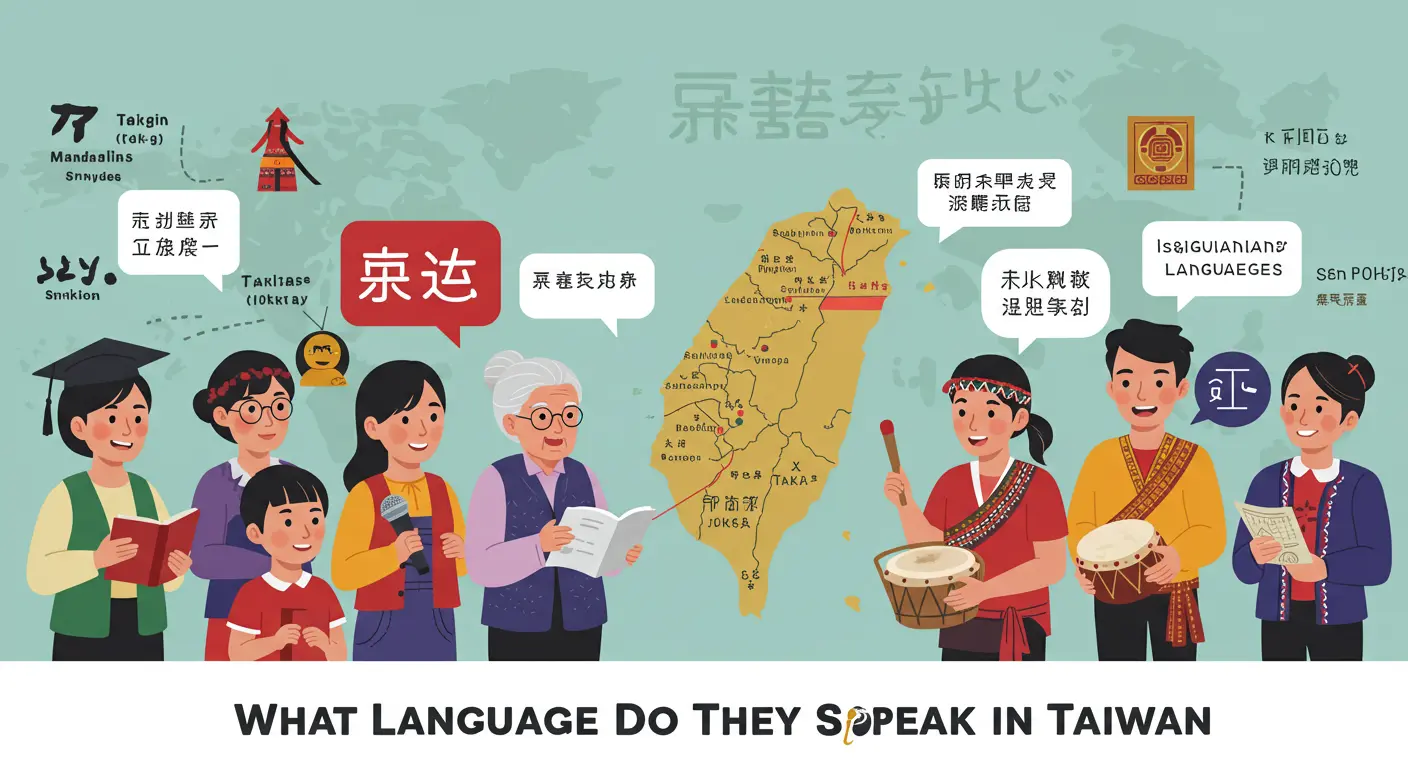






1 Comment